From the Trenches
Tales Out of School
By MARLEY BROWN
Friday, June 08, 2018
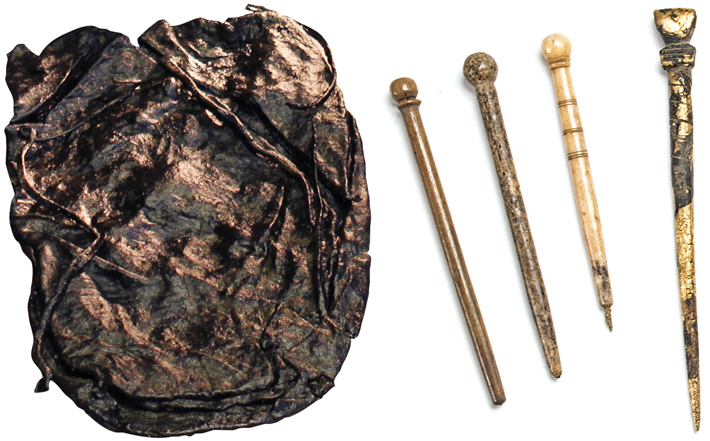 One of the largest urban excavations ever conducted in Oxford, England, has revealed artifacts relating to the lives of medieval students and clergy at the city’s famous university. Hundreds of items recovered from the site of Greyfriars, a Franciscan friary connected with Oxford, founded in 1224 and closed in 1538 during King Henry VIII’s dissolution of the monasteries, include writing styluses, book clasps, leather sandals, and glass vials possibly used for experiments, as well as animal bones, cutlery, beer mugs, and jugs for storing wine. According to Ben Ford of Oxford Archaeology, ample evidence of eating and drinking suggests pleasures of the table held considerable importance for the community. “We are looking in particular at the food remains,” he says. “Did they adhere to their vow of poverty, and did this change through the life of the friary? Are there any indications of higher status foodstuffs, and how did the diet of the friars compare to that of the ordinary townsfolk?”
One of the largest urban excavations ever conducted in Oxford, England, has revealed artifacts relating to the lives of medieval students and clergy at the city’s famous university. Hundreds of items recovered from the site of Greyfriars, a Franciscan friary connected with Oxford, founded in 1224 and closed in 1538 during King Henry VIII’s dissolution of the monasteries, include writing styluses, book clasps, leather sandals, and glass vials possibly used for experiments, as well as animal bones, cutlery, beer mugs, and jugs for storing wine. According to Ben Ford of Oxford Archaeology, ample evidence of eating and drinking suggests pleasures of the table held considerable importance for the community. “We are looking in particular at the food remains,” he says. “Did they adhere to their vow of poverty, and did this change through the life of the friary? Are there any indications of higher status foodstuffs, and how did the diet of the friars compare to that of the ordinary townsfolk?”
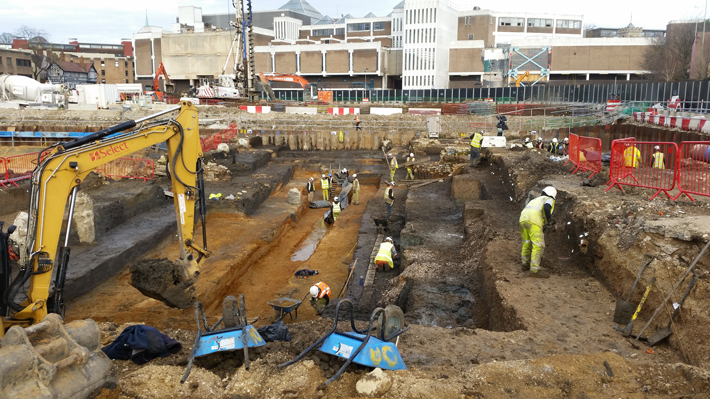
Seaworthy Sumerians
By DANIEL WEISS
Friday, June 08, 2018
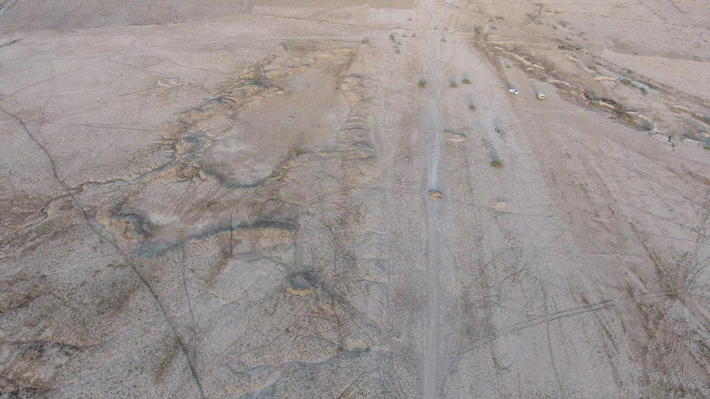 The Sumerians are known for having established one of the world’s earliest agricultural civilizations, but a chance discovery in southern Iraq suggests they also traveled the seas and conducted long-range trade. In 2016, researchers from the Sapienza University of Rome were excavating at the site of Abu Tbeirah when they spied clay bricks in a foxhole. In the years since, they have found remains of brick ramparts along with docks and an artificial basin that served as the town’s port. Dating back more than 4,000 years, it is the oldest harbor ever to have been discovered in Iraq.
The Sumerians are known for having established one of the world’s earliest agricultural civilizations, but a chance discovery in southern Iraq suggests they also traveled the seas and conducted long-range trade. In 2016, researchers from the Sapienza University of Rome were excavating at the site of Abu Tbeirah when they spied clay bricks in a foxhole. In the years since, they have found remains of brick ramparts along with docks and an artificial basin that served as the town’s port. Dating back more than 4,000 years, it is the oldest harbor ever to have been discovered in Iraq.
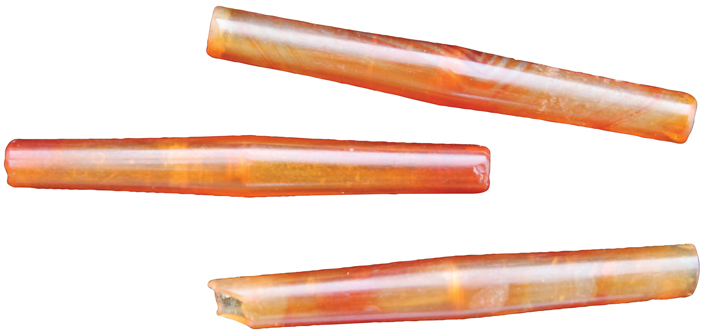 The researchers have also found carnelian beads from India along with alabaster vases and other objects that must have been procured overseas. The finds are surprising because the extensive records Sumerians left behind in the form of cuneiform tablets include a great deal of information about farming, but little about seafaring. “The texts speak mainly of agriculture because it required the most organization,” says excavation codirector Franco D’Agostino. Archaeology is helping to make clear how important seafaring was to them as well.
The researchers have also found carnelian beads from India along with alabaster vases and other objects that must have been procured overseas. The finds are surprising because the extensive records Sumerians left behind in the form of cuneiform tablets include a great deal of information about farming, but little about seafaring. “The texts speak mainly of agriculture because it required the most organization,” says excavation codirector Franco D’Agostino. Archaeology is helping to make clear how important seafaring was to them as well.
Pinpoint Precision
By MARLEY BROWN
Friday, June 08, 2018
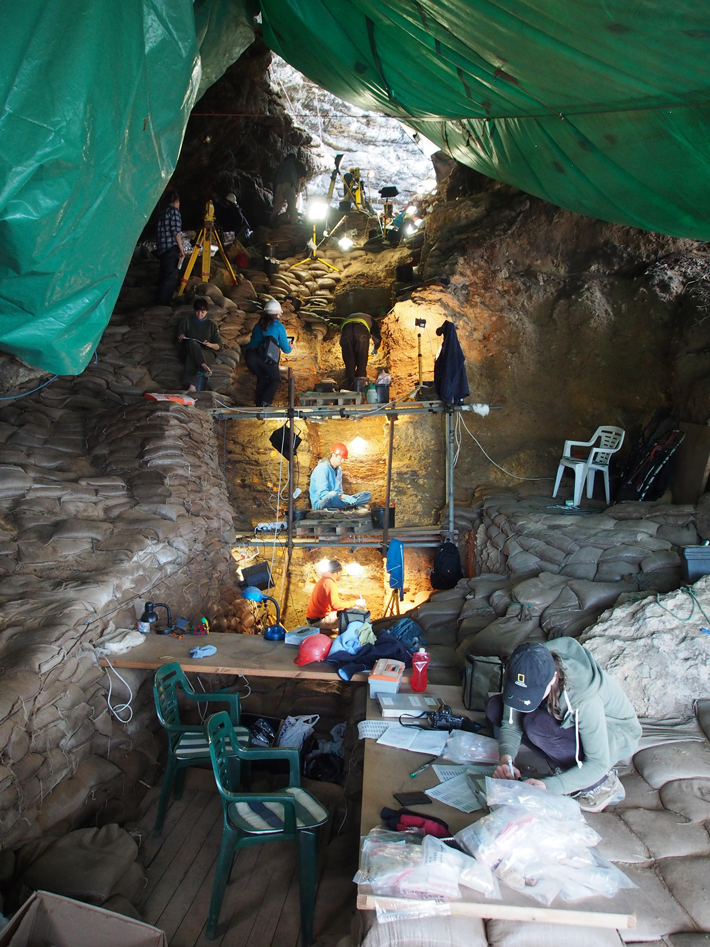 The cataclysmic eruption 74,000 years ago of Sumatra’s Mount Toba caused a volcanic winter and may have nearly annihilated the earth’s human population. The search for evidence of that eruption has contributed potentially groundbreaking advances to archaeological dating. Working at two sites on the coast of South Africa, researchers have discovered a layer containing glass shards from the blast that fell over a two-week period and are invisible to the naked eye. The precise time frame provided by the shards can serve as a control to test methods for dating rock shelters and other sites occupied millennia ago. “We’ve now sampled several other cave sites in South Africa looking for evidence of the Toba eruption,” explains archaeologist and paleoanthropologist Curtis Marean. “If we can find it, we can align those chronologies to a two-week precision—which is unprecedented.” As for the people living there, shell midden and toolmaking evidence suggests they survived, and even grew more productive. Marean says, “Hunter-gatherer economies are resilient because they can switch resources when needed.”
The cataclysmic eruption 74,000 years ago of Sumatra’s Mount Toba caused a volcanic winter and may have nearly annihilated the earth’s human population. The search for evidence of that eruption has contributed potentially groundbreaking advances to archaeological dating. Working at two sites on the coast of South Africa, researchers have discovered a layer containing glass shards from the blast that fell over a two-week period and are invisible to the naked eye. The precise time frame provided by the shards can serve as a control to test methods for dating rock shelters and other sites occupied millennia ago. “We’ve now sampled several other cave sites in South Africa looking for evidence of the Toba eruption,” explains archaeologist and paleoanthropologist Curtis Marean. “If we can find it, we can align those chronologies to a two-week precision—which is unprecedented.” As for the people living there, shell midden and toolmaking evidence suggests they survived, and even grew more productive. Marean says, “Hunter-gatherer economies are resilient because they can switch resources when needed.”
A Final Account
By JARRETT A. LOBELL
Friday, June 08, 2018
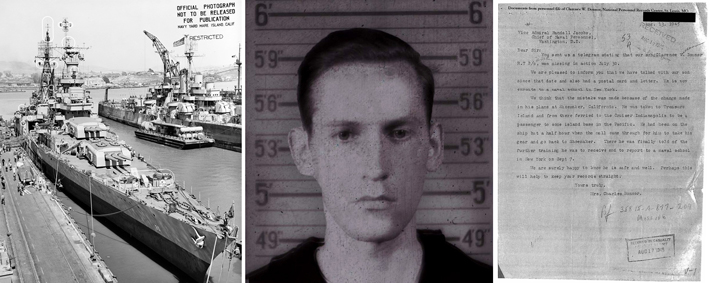 When USS Indianapolis was found last year (“Top 10 Discoveries,” January/February 2018), it laid to rest some of the questions that had always surrounded the location of her sinking. However, the exact number of people aboard Indianapolis when she went down continued to be debated. This uncertainty, too, has now been resolved, with the final correct number established at 1,195, not, as was previously believed, 1,196. While researching the discrepancy, naval historian Richard Hulver found a letter from Radio Technician 2nd Class Clarence W. Donnor’s mother, Ruth, in reply to a telegram informing her that her son had perished. She wrote that she had, in fact, spoken to Clarence since July 30, 1945, the day Indianapolis sank to the bottom of the North Pacific. The letter clarified that although RT2c Donnor had been on Indianapolis in San Francisco where she was docked, within an hour of arriving there, he received new orders to go to officer training in New York and left the day before the vessel departed on her final voyage. “I was somewhat surprised by the file,” says Hulver. “I felt relief for the Donnors that their son escaped being part of that voyage. There was also a sense of gratefulness as a historian that Mrs. Donnor submitted her letter. She finished it with the hope that it would ‘set the record straight,’ and it did—just 73 years later.” The official number of those who died in the attack has also been revised from 880 down to 879 to account for RT2c Donnor.
When USS Indianapolis was found last year (“Top 10 Discoveries,” January/February 2018), it laid to rest some of the questions that had always surrounded the location of her sinking. However, the exact number of people aboard Indianapolis when she went down continued to be debated. This uncertainty, too, has now been resolved, with the final correct number established at 1,195, not, as was previously believed, 1,196. While researching the discrepancy, naval historian Richard Hulver found a letter from Radio Technician 2nd Class Clarence W. Donnor’s mother, Ruth, in reply to a telegram informing her that her son had perished. She wrote that she had, in fact, spoken to Clarence since July 30, 1945, the day Indianapolis sank to the bottom of the North Pacific. The letter clarified that although RT2c Donnor had been on Indianapolis in San Francisco where she was docked, within an hour of arriving there, he received new orders to go to officer training in New York and left the day before the vessel departed on her final voyage. “I was somewhat surprised by the file,” says Hulver. “I felt relief for the Donnors that their son escaped being part of that voyage. There was also a sense of gratefulness as a historian that Mrs. Donnor submitted her letter. She finished it with the hope that it would ‘set the record straight,’ and it did—just 73 years later.” The official number of those who died in the attack has also been revised from 880 down to 879 to account for RT2c Donnor.
Late Antique TLC
By MARLEY BROWN
Friday, June 08, 2018
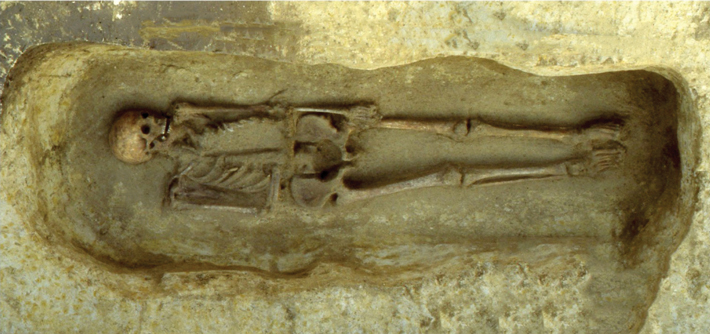
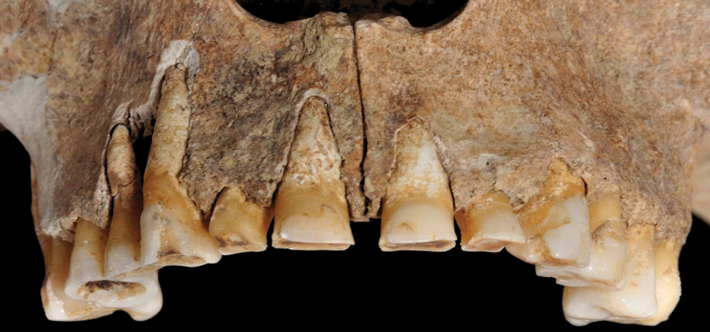 A sixth-century Lombard warrior buried in northern Italy appears to have worn a prosthetic weapon. A knife and buckle were discovered along with evidence that his forearm had been amputated. The stump was positioned across his chest and researchers identified a callus and bone spurs consistent with pressure from a prosthetic device. Significant wear on his teeth suggests he used them to tighten its straps. According to Ileana Micarelli of the Sapienza University of Rome, the man, possibly a combatant in the A.D. 568 Lombard invasion of Italy, was well cared for following the operation. “The strength of his relationship with the community is at the heart of the surgical intervention’s success,” she says. “And in my opinion, social relations are as important as the level of medical technology.”
A sixth-century Lombard warrior buried in northern Italy appears to have worn a prosthetic weapon. A knife and buckle were discovered along with evidence that his forearm had been amputated. The stump was positioned across his chest and researchers identified a callus and bone spurs consistent with pressure from a prosthetic device. Significant wear on his teeth suggests he used them to tighten its straps. According to Ileana Micarelli of the Sapienza University of Rome, the man, possibly a combatant in the A.D. 568 Lombard invasion of Italy, was well cared for following the operation. “The strength of his relationship with the community is at the heart of the surgical intervention’s success,” she says. “And in my opinion, social relations are as important as the level of medical technology.”
Advertisement
Advertisement
IN THIS ISSUE
Features
Westminster Abbey’s Hidden History
The City at the Beginning of the World
Letter from England
From the Trenches
Sun Storm
Off the Grid
Honoring Osiris
Mirror, Mirror
Pompeii Revisited
Nazi Sub Discovered
Divine Invitation
Samurai Nest Egg
Far From Home
Late Antique TLC
Pinpoint Precision
A Final Account
Seaworthy Sumerians
Tales Out of School
World Roundup
New Mexico’s giant sloth, Peruvian llama sacrifice, Sweden’s oldest onion, bovine brain surgery, and the first Arabians
Artifact
It was a bout time, too
Advertisement

Recent Issues
-
 May/June 2024
May/June 2024
-
 March/April 2024
March/April 2024
-
 January/February 2024
January/February 2024
-
 November/December 2023
November/December 2023
-
 September/October 2023
September/October 2023
-
 July/August 2023
July/August 2023
-
 May/June 2023
May/June 2023
-
 March/April 2023
March/April 2023
-
 January/February 2023
January/February 2023
-
 November/December 2022
November/December 2022
-
 September/October 2022
September/October 2022
-
 July/August 2022
July/August 2022
-
 May/June 2022
May/June 2022
-
 March/April 2022
March/April 2022
-
 January/February 2022
January/February 2022
-
 November/December 2021
November/December 2021
-
 September/October 2021
September/October 2021
-
 July/August 2021
July/August 2021
-
 May/June 2021
May/June 2021
-
 March/April 2021
March/April 2021
-
 January/February 2021
January/February 2021
-
 November/December 2020
November/December 2020
-
 September/October 2020
September/October 2020
-
 July/August 2020
July/August 2020
-
 May/June 2020
May/June 2020
-
 March/April 2020
March/April 2020
-
 January/February 2020
January/February 2020
-
 November/December 2019
November/December 2019
-
 September/October 2019
September/October 2019
-
 July/August 2019
July/August 2019
-
 May/June 2019
May/June 2019
-
 March/April 2019
March/April 2019
-
 January/February 2019
January/February 2019
-
 November/December 2018
November/December 2018
-
 September/October 2018
September/October 2018
-
 July/August 2018
July/August 2018
-
 May/June 2018
May/June 2018
-
 March/April 2018
March/April 2018
-
 January/February 2018
January/February 2018
-
 November/December 2017
November/December 2017
-
 September/October 2017
September/October 2017
-
 July/August 2017
July/August 2017
-
 May/June 2017
May/June 2017
-
 March/April 2017
March/April 2017
-
 January/February 2017
January/February 2017
-
 November/December 2016
November/December 2016
-
 September/October 2016
September/October 2016
-
 July/August 2016
July/August 2016
-
 May/June 2016
May/June 2016
-
 March/April 2016
March/April 2016
-
 January/February 2016
January/February 2016
-
 November/December 2015
November/December 2015
-
 September/October 2015
September/October 2015
-
 July/August 2015
July/August 2015
-
 May/June 2015
May/June 2015
-
 March/April 2015
March/April 2015
-
 January/February 2015
January/February 2015
-
 November/December 2014
November/December 2014
-
 September/October 2014
September/October 2014
-
 July/August 2014
July/August 2014
-
 May/June 2014
May/June 2014
-
 March/April 2014
March/April 2014
-
 January/February 2014
January/February 2014
-
 November/December 2013
November/December 2013
-
 September/October 2013
September/October 2013
-
 July/August 2013
July/August 2013
-
 May/June 2013
May/June 2013
-
 March/April 2013
March/April 2013
-
 January/February 2013
January/February 2013
-
 November/December 2012
November/December 2012
-
 September/October 2012
September/October 2012
-
 July/August 2012
July/August 2012
-
 May/June 2012
May/June 2012
-
 March/April 2012
March/April 2012
-
 January/February 2012
January/February 2012
-
 November/December 2011
November/December 2011
-
 September/October 2011
September/October 2011
-
 July/August 2011
July/August 2011
-
 May/June 2011
May/June 2011
-
 March/April 2011
March/April 2011
-
 January/February 2011
January/February 2011
Advertisement






